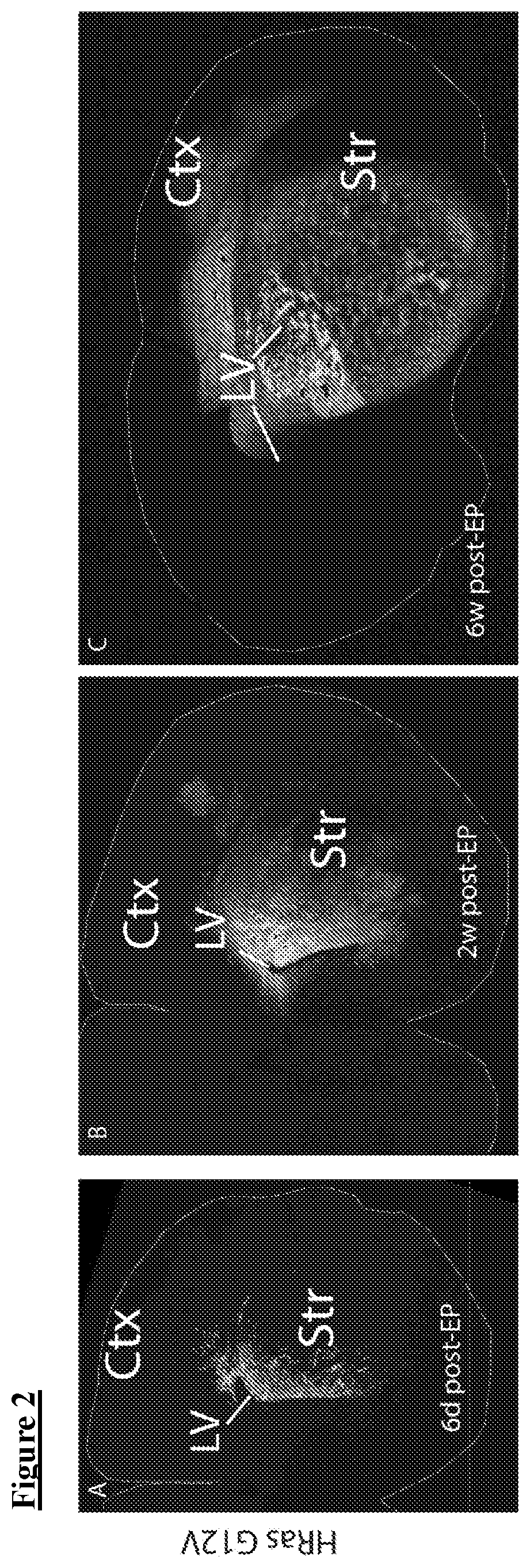ETS factors regulate neural stem cell depletion and gliogenesis in Ras pathway glioma
a neural stem cell and glioma technology, applied in the field of cancer treatment and management, can solve the problems of gliomas inevitably evolving into secondary gliomas, few months of survival, and difficult treatment of high-grade gliomas
- Summary
- Abstract
- Description
- Claims
- Application Information
AI Technical Summary
Benefits of technology
Problems solved by technology
Method used
Image
Examples
example 1
Mice and Electroporation
[0035]CD1 mice were used for all experiments, which were performed according to the Cedars-Sinai Institutional Animal Care and Use Committee. Postnatal lateral ventricle electroporations were performed as previously described. Briefly, postnatal day 1-2 pups were placed on ice for ˜8 minutes until unresponsive to tail pressure. 1.2 μl of a plasmid DNA mix (typically 1.0 μg / μl) in Tris-EDTA buffer was injected into the left lateral ventricle. Plasmid details are available in Table 1. Employing Signagel, platinum Tweezertrodes were used to EP with three to five pulses of 115-135 V (50 ms; separated by 950 ms) generated using the ECM 830 BTX Electroporator (Harvard Apparatus).
example 2
[0036]After anesthesia, mouse brains were isolated and immersion fixed in 4% ice-cold paraformaldehyde (PFA) overnight. Brains were then embedded in low melting point 4% agarose and sectioned at 70 μm on a vibratome. For Errb2 immunohistochemistry, mice were transcardially perfused.
example 3
Imaging
[0037]All confocal images were collected on a Nikon A1R or C2 inverted laser confocal microscope. For hemi or whole brain images, the automated stitching function of Nikon Elements was used to create a seamless merged image from multiple image fields.
PUM
| Property | Measurement | Unit |
|---|---|---|
| time | aaaaa | aaaaa |
| temperature | aaaaa | aaaaa |
| time | aaaaa | aaaaa |
Abstract
Description
Claims
Application Information
 Login to View More
Login to View More - R&D
- Intellectual Property
- Life Sciences
- Materials
- Tech Scout
- Unparalleled Data Quality
- Higher Quality Content
- 60% Fewer Hallucinations
Browse by: Latest US Patents, China's latest patents, Technical Efficacy Thesaurus, Application Domain, Technology Topic, Popular Technical Reports.
© 2025 PatSnap. All rights reserved.Legal|Privacy policy|Modern Slavery Act Transparency Statement|Sitemap|About US| Contact US: help@patsnap.com



